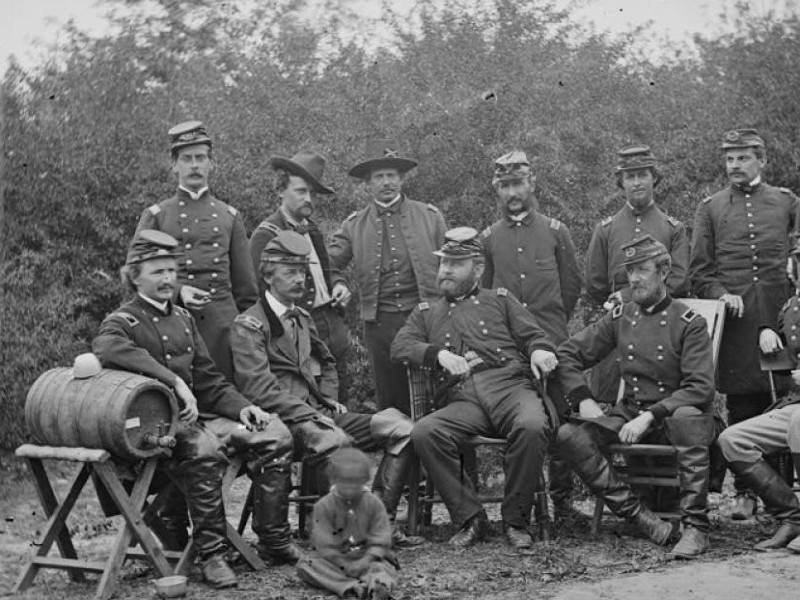Did you know!? Maryland’s first brewery was established in the Annapolis area in 1703. Preservation Maryland teamed up with University of Maryland graduate student, Emma Schratz to share a brief history of Maryland’s brewing history for the Maryland Humanities podcast.
LISTEN TO THE RECORDING
TRANSCRIPT
Beer in the United States began almost as a necessity. During the early days of the United States, fermented drinks like beer and ciders were safer to drink than water. The boiling and fermentation process killed disease-causing organisms, which prevented serious illness like cholera. The drink became ingrained in social circles in America. Maryland’s first brewery was established in the Annapolis area in 1703.
Many of the Founding Fathers had a soft spot for beer – George Washington was known to brew beer and enjoy American-made Porters. Brewing in colonial days was a female-driven industry, with much of the production happening in the home. Even Martha Washington managed the home brewing at her husband’s estate. Once the American Revolution broke out, the import of alcohol from England became incredibly expensive. American beer became a symbol of American independence.
During the 1800s, recent German immigrants introduced America to the lager style and the rich social tradition of the German Biergarten. This increased the popularity of beer in America, and the number of breweries swelled to more than 4,000 by 1873. However, around the turn of the century, the Temperance Movement stifled this growth. Many Americans blamed the social woes plaguing American cities on the over-consumption of whiskey and other hard spirits, claiming that they posed a serious threat to the country’s fledgling political system.
TEMPERANCE & PROHIBITION
The Temperance Movement’s efforts demolished the brewing industry. Home brewing was almost completely eliminated, and many women became disassociated with the practice. Breweries shuttered around the country. The United States enacted Prohibition in 1919. Protests and riots broke out, and an entire new industry of bootleggers and speakeasies developed. The backlash was so strong that the U.S. Government eventually ratified the 21st Amendment, which repealed Prohibition in 1933.
American brewing took nearly 75 years to recover from the effects of Prohibition. Home brewing was not legalized by the 21st Amendment. Advancements in refrigeration, advertisement, manufacturing technology, and distribution networks during the 20th Century enabled beer and other beverages to be canned and shipped thousands of miles away. Large brewing companies like Anheuser-Busch were able to weather prohibition due to their vast distribution networks and support of the American Armed Forces. The breweries succeeded due to the production of one or two styles, made with inexpensive ingredients and shipped all around the country. Larger breweries were able to purchase and consolidate their competitor’s businesses, following the trends in other industries across America.
BIG BEER
By the 1960s, this rapid consolidation nearly decimated the brewing industry. No longer did Americans need to go to their local breweries or taverns to grab a beer. They could buy cans of beer, produced thousands of miles away, in the comfort of their own homes. The economic impact was so dire that just six brewing companies gained control of over 90 percent of the entire beer market. However, the cultural revolution of craft brewing rose to challenge the big beer companies.
One of the last breweries to hang on during this period of consolidation was the Christian Heurich Brewing Company that was located on the Potomac River on what is now the site of the Kennedy Center. The Heurich Brewing Company was in operation from 1872 through 1956 and during its height of production at the turn of the century, it was the second largest employer in Washington D.C. – apart from the Federal Government. The Heurich mansion is now run as a historic house museum and has brought back some historic recipes of Heurich in partnership with DC Brau Brewing. DC Brau has the distinction of being the first brewery to open since Heurich’s closing – they tapped their first keg in 2011.
BEER RENAISSANCE
With the passage of HB1337 in 1977, home brewing was again made legal, and brewers began experimenting with craft brewing and playing around with styles and ingredients in their homes. Craft brewers are generally more concerned about the quality of the beers, as well as the social culture of beer production and consumption.
Here in Maryland, the Brewers Association advocates for the craft beer community including issues surrounding production and distribution limits for over 70 Maryland-based breweries. Together the brewers have a $637.6 million impact and support 6,541 jobs.

Union generals with a keg of beer, 1862. Photo from the American Battlefield Trust.
Breweries have also proven their commitment to the spirit of Maryland pride by being a part of great partnerships, like the collaboration between the National Museum of Civil War medicine and Flying Dog Brewing known as Sawbones – and the recent Light City collaboration Lumen Ale between Baltimore Office of Promotion of the Arts and Brewer’s Art.
If reading this made you thirsty, one of our favorite local Baltimore breweries is Peabody Heights Brewing on the site of a former Orioles stadium that has a great collection of vintage O’s photographs in the tap room.
Emma Schrantz is pursuing a Master’s degree in Architecture and Historic Preservation at the University of Maryland. She writes about the intersections between the craft brewing industry, historic preservation, and community development. Special thanks to Sarah Weissman at Maryland Humanities and Luke Spicknall at WYPR.
